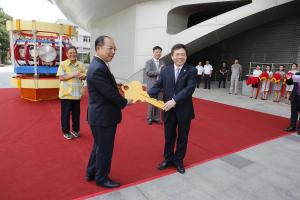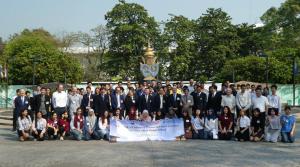A promising newcomer
A small tokamak changed hands in July of last year. HT-6M, a circular limiter machine developed at the Chinese Institute of Plasma Physics (ASIPP) in the 1980s, was pulled out of retirement to start a new life at the Thailand Institute of Nuclear Technology (TINT).
IRFM and ASIPP specialists, now joined by Japanese colleagues from the Large Helical Device, are involved in the ASEAN School on Plasma and Nuclear Fusion (ASPNF) they contributed to establishing. "The objective is to train a first nucleus of 20 to 30 physicists and engineers through a five-year program," explains Tuong. "The first class is presently in its second year of training and will soon be ready to practice on HT-6M."



